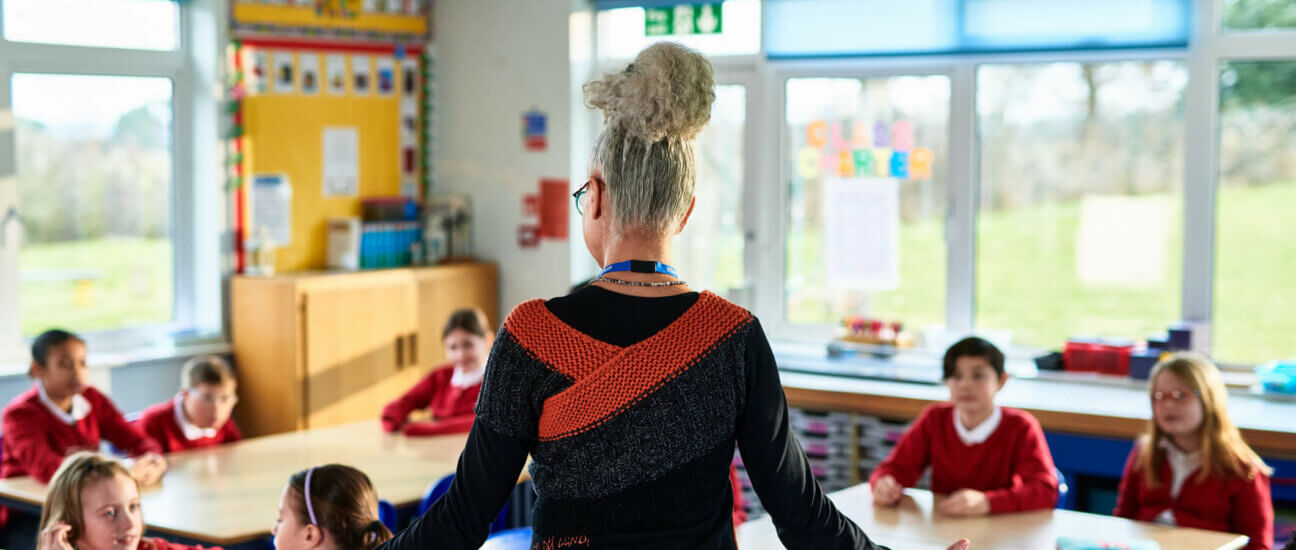Published on October 25th, 2023
What Are the 4 Cs of Education?
9 minute read

Critical thinking, creativity, collaboration, and communication – these four essential skills, often referred to as the 4 Cs of education, have become a fundamental framework for students in academic settings and their future professional endeavours.
In this guide, we’ll explore the meaning and significance of each of these skills, understanding how they contribute to students’ growth and development. We’ll uncover practical methods that educators can implement in the classroom to nurture these skills, and we’ll also shed light on how students can apply the 4 Cs in real-life situations.
The 4 Cs of 21st-century education
1. Critical thinking
Critical thinking is the ability to analyse, evaluate, and interpret information objectively. It encourages students to question assumptions, consider multiple perspectives, and make well-reasoned decisions.
By developing critical thinking skills, students become better problem solvers and more informed individuals.
2. Creativity
Creativity is the driving force behind innovation and originality. It involves thinking imaginatively, exploring new ideas, and approaching challenges in unique ways.
Fostering creativity allows students to tap into their full potential, unlocking fresh solutions and nurturing a sense of curiosity and exploration.
3. Collaboration
Collaboration emphasises the significance of working effectively with others. Students learn to value diverse viewpoints, communicate their ideas clearly, and contribute productively in a team setting.
Collaborative skills are increasingly essential as complex issues often require collective efforts and pooling of expertise.
4. Communication
Effective communication lies at the heart of successful interactions. This skill encompasses both expressing ideas clearly and actively listening to others. Strong communicators can convey their thoughts with clarity and empathy, fostering better understanding and cooperation.
Why are the 4 Cs important?
Becoming proficient in all four Cs will prepare students for the challenges and opportunities they will likely face later in life.
These skills can also be carried far beyond the classroom setting, helping to improve a young person’s job prospects once they leave school and enter the world of work.
In practice, the 4 Cs will help students learn valuable transferable skills, including:
- Solving problems
- Public speaking
- Working in teams
- Embracing new ideas or concepts
- Active listening
How can educators integrate the 4 Cs into their teaching?
There are a few ways you can incorporate the four Cs into your lessons:
1. Set tasks dedicated to one of the four skills
Design assignments and projects specifically focusing on developing one of the four Cs. For example, you can create critical thinking exercises that require students to analyse information and solve problems.
You could encourage creativity by assigning projects that allow students to express their ideas innovatively, like using colour, images or creative writing to help them understand the content. This can also help benefit visual learners greatly.
For collaboration and communication, you could try implementing group discussions or presentations where students can share ideas and work together to build their presentations.
2. Encourage students to collaborate in groups
Give your students a common goal and set them the task of working together to achieve it. Group projects and activities provide an excellent opportunity for students to practice working together and developing their teamwork skills.
By engaging in collaborative tasks, students learn to communicate effectively, appreciate diverse perspectives, and contribute their unique strengths to accomplish shared objectives.
This hands-on experience fosters the four Cs of education, improves their listening skills, and prepares students for future working environments.
3. Make learning engaging
Create interactive and captivating learning experiences that capture students’ interest and curiosity. Incorporate hands-on activities, multimedia resources, and technology to make lessons more dynamic and relevant.
Encourage active participation through discussions, debates, and problem-solving exercises, promoting critical thinking, creativity and student engagement.
By making learning enjoyable and meaningful, students are more likely to be motivated and develop a deeper understanding of the subject matter.
4. Use technology to enhance lessons
Education technologies, such as interactive whiteboards, can prove hugely beneficial when trying to help students develop their skills.
Incorporating technology into your lessons also helps improve the digital literacy of your students, something which is more important than ever in today’s technology-centric world.
5. Embrace different styles of learning
Different students need different things from their teachers to reach their full academic potential. What might come naturally to one pupil may be incredibly difficult for another, so understanding each person’s abilities and learning preferences is key. The best way to do this is by using resources on the VARK model of learning styles.
6. Reward students for demonstrating the 4 Cs
Whether it’s during planned lessons, on educational trips or in their extension study assignments, demonstrations of the 4 Cs should be acknowledged and celebrated.
By recognising and celebrating students’ application of the 4 Cs, educators reinforce the value of these skills in real-life contexts, motivating students to continue honing them. Additionally, fostering a culture of appreciation for the 4 Cs encourages peer support and creates a positive classroom atmosphere that nurtures the development of these essential competencies.
Unlocking the 4 Cs with Promethean
Are you looking for innovative ways to foster the 4 Cs of education in your classroom? Discover how Promethean’s interactive technologies can empower students to excel in critical thinking, creativity, collaboration, and communication.
Promethean’s interactive displays, educational software, and collaborative tools can revolutionise your teaching methods and inspire students to become active participants in their education.
For more information on how you can engage students with technology, check out our blog for guides on how to monitor student engagement and how to accommodate different learning styles in higher education!
FAQs
How can parents support the development of the 4 Cs at home?
Parents can support the development of the 4 Cs at home by encouraging open discussions, providing opportunities for creative expression, organising family activities that involve teamwork, and promoting effective communication within the family.
How can schools assess the development of the 4 Cs in students?
Schools can assess the development of the 4 Cs in students through a combination of formative and summative assessments. Performance in group projects, critical thinking tasks, creative assignments, and communication-based activities can provide insights into students’ progress in these skills.
How do the 4 Cs align with workforce demands?
Modern workplaces value employees who can think critically, generate innovative solutions, communicate effectively, and collaborate with colleagues. The 4 Cs align with the skills that employers seek in an ever-evolving job market.
Can the 4 Cs be developed at all education levels?
Yes, the 4 Cs can be developed at all education levels, from early childhood to higher education. The methods and complexity may vary, but fostering these skills from a young age sets a foundation for continued growth throughout a student’s academic journey.




